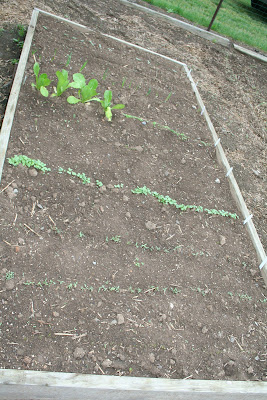 |
| Poison Hemlock - Conium maculatum Photo Credit C. Mayer |
I've always had a sneaking admiration for weeds. We gardeners spend a whole lot of time creating a perfect spot to nurture a plant - rich, organic soil, regularly fertilizing for its nutrient needs, watering during a drought, etc. and yet still lose specimens.
Then, you notice a dandelion thriving in the crack of a sidewalk in the most inhospital location possible, with no help at all from us.
So, here’s another new feature I hope to do for the blog – a regular entry highlighting a weed of some sort that you might notice in your gardens, or, like this week's entry, conspicuously growing alongside the road. But before we get into the details on this particular weed, let’s start off with some background about the plants that will be in this series, or What are Weeds and Why Should We Care? From the Penn State guide:
There are numerous definitions of a weed, including:
- a plant out of place and not intentionally sown
- a plant growing where it is not wanted
- a plant whose virtues have not yet been discovered. (R.W.Emerson)
- plants that are competitive, persistent, pernicious, and interfere negatively with human activity (Ross, et. al.) and many others.
No matter what definition is used, weeds are plants whose undesirable qualities outweigh their good points, according to man. Our human activities create weed problems since no plant is a "weed" in nature. Though we may try to manipulate nature for our own good, nature is persistent. Through the manipulation process, certain weeds are controlled, while, other more serious weeds may thrive because favorable growing conditions for them also have been meet. Weeds are naturally strong competitors and those weeds that can best compete always tend to dominate. Both humans and nature are involved in plant breeding programs. The main difference between the two programs is that man breeds plants for yield, while nature breeds plants for survival.So there is nothing inherent to a plant that automatically classifies it as a weed; it must have some human, subjectively-defined aspect that makes it harmful, or even an arbitrarily assigned "I don't want it growing there" decision on the part of the gardener to designate it as such. So in many cases, one person's "weed" is another person's "wild flower." In subsequent posts, we'll discuss Pennsylvania's regulatorily defined noxious weeds, and touch on invasive plants, as well, but for now, let’s look at a plant you may have noticed in bloom right now, growing alongside the road - Conium maculatum, or Poison Hemlock.
 |
| Poison Hemlock, or Conium maculatum Photo Credit C. Mayer |
The common name pretty much sums up why it’s considered a weed – its toxicity. The plant’s infamy was secured back in ancient Greece when it was used as a means of execution, with its most notable victim being the philosopher Socrates. The plant is native to Europe, but was brought over here as an ornamental plant, where it escaped cultivation and is now widespread along roadsides, hiking trails, ditches and field borders.
Although grazing animals will avoid it given alternatives, it can cause problems in fields harvested for hay or silage. It merits a chapter in Amy Stewart’s book, Wicked Plants. Botanically, it is a bienniel in the same family of plants as carrots, parsley, and Queen Anne's Lace. The poisonous compounds it produces are in the same family of chemicals as nicotine, but at much higher concentrations than found in tobacco plants.
Here are five basic safety rules to avoid accidental poisoning:
- NEVER eat any part of an unknown plant whether in your yard or in the wild.
- NEVER chew on jewelry made from plant parts such as seeds. Children should not be allowed to use them for teething or "play jewelry".
- NEVER attempt to make your own "Nature tea" unless you know the plant you are using and you know that the recipe is from an authoritative source.
- IF YOU GROW YOUR OWN HERBS for cooking, make sure that they are properly identified. Some poisonous plants resemble common herbs.
- DO NOT ALLOW CHILDREN to pick anything in the yard without your supervision. This rule should apply even for your garden vegetables and fruit.
 |
| Note the mottled red stem Photo Credit C. Mayer |
In addition to its toxicity, Pennsylvania's Department of Conservation and Natural Resources (DCNR) in its Fact Sheet says,
Poison hemlock may act as a pioneer species quickly colonizing disturbed sites and displacing natives during early successional series. The presence of C. maculatum degrades habitat quality and could indicate a management problem on an ecological preserve.
I think with all those undesirable characteristics, classifying this one as a weed is pretty easy. If you have any suggestions for particular weeds that you would like to see covered in this series, feel free to mention them in the comments section.



















































